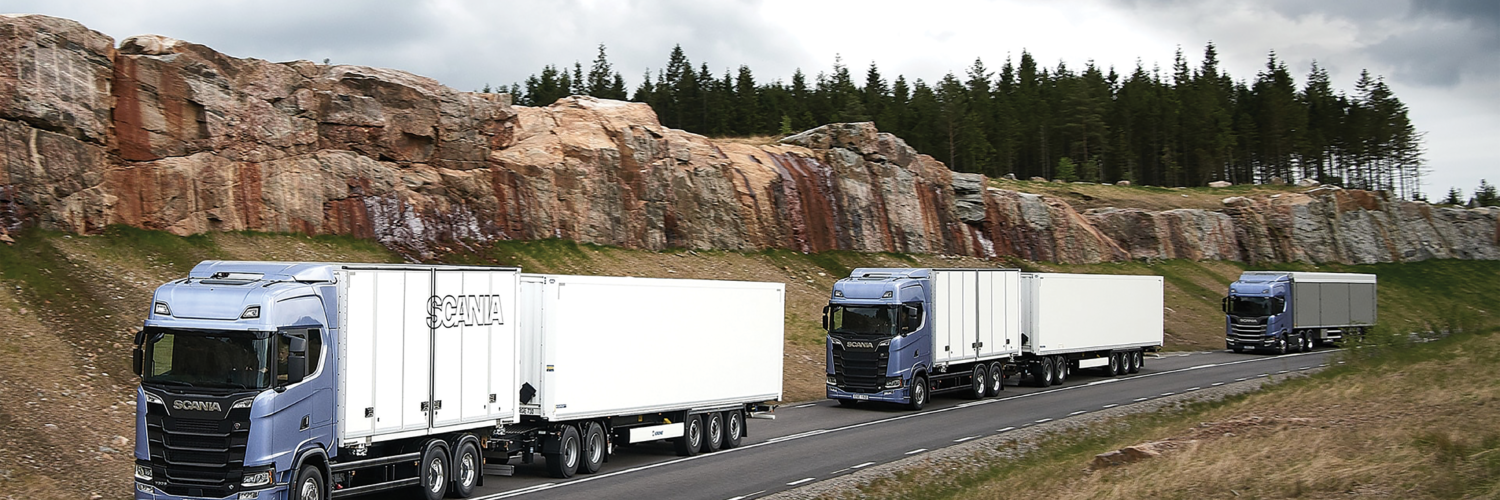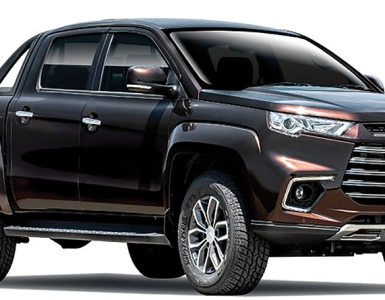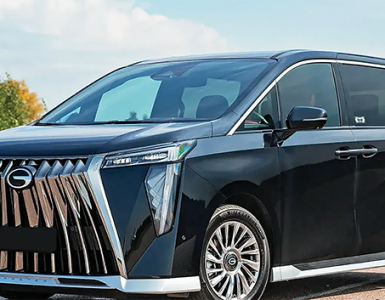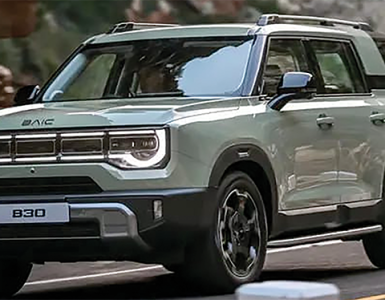PLATOONING: The system holds the promise of revolutionizing the way goods are transported on our roads
By Motoring Reporter
The trucking industry is constantly seeking innovative solutions to improve efficiency, reduce fuel consumption, and enhance safety.
One such groundbreaking concept that has gained significant attention is truck platooning.
By leveraging advanced technologies and interconnected communication systems, truck platooning holds the promise of revolutionizing the way goods are transported on our roads.
In this comprehensive article, we will delve into the intricacies of truck platooning, exploring its potential benefits, challenges, and the transformative impact it could have on the trucking industry.
Understanding Truck Platooning
a) Definition And Concept
Truck platooning refers to a technique where a group of two or more trucks, closely spaced and interconnected, travel in a convoy formation on highways.
Through vehicle-to-vehicle (V2V) communication systems, the trucks are able to maintain consistent speeds, brake simultaneously, and react swiftly to changes in traffic conditions.
b) How Truck Platooning Works
Truck platooning relies on advanced technologies, including sensors, radar systems, and vehicle control algorithms.
The lead truck, also known as the “platoon leader,” sets the pace and communicates critical information to the following trucks, known as “platoon followers,” enabling synchronized actions such as acceleration, braking, and lane changes.
Benefits Of Truck Platooning
a) Fuel Efficiency And Emissions Reduction
One of the most significant advantages of truck platooning is the potential for substantial fuel savings.
By reducing air resistance through close vehicle spacing, trucks in a platoon can experience fuel efficiency improvements of up to 10-20%.
This not only leads to cost savings for trucking companies but also contributes to a considerable reduction in carbon emissions.
b) Enhanced Safety
Truck platooning can enhance overall road safety through its synchronized and coordinated actions.
The interconnectivity between the trucks allows for quicker response times to potential hazards, reducing the likelihood of accidents.
Additionally, improved stability and reduced aerodynamic drag contribute to safer driving conditions, especially during adverse weather.
c) Traffic Flow And Congestion Reduction
By maintaining consistent speeds and reducing unnecessary lane changes, truck platooning has the potential to optimize traffic flow on highways.
This can result in a reduction in congestion, easing the strain on transportation networks and reducing travel times for both trucks and passenger vehicles.
Overcoming Challenges And Considerations
a) Technology And Infrastructure
For truck platooning to reach its full potential, there are significant technological and infrastructure requirements.Vehicles must be equipped with advanced sensors, communication systems, and robust vehicle-to-vehicle connectivity.
Moreover, the infrastructure must support the necessary communication networks and provide adequate charging or refueling infrastructure for electric or alternative fuel-powered trucks.
b) Regulation And Standardization
To enable widespread adoption of truck platooning, a comprehensive regulatory framework and industry-wide standards must be established.
This includes addressing legal considerations, liability issues, and establishing guidelines for safe and effective operation.
Collaborative efforts between policymakers, industry stakeholders, and regulatory bodies are essential to navigate these complexities.
Real-World Implementation And Case Studies
a) Global Initiatives
Truck platooning has gained traction worldwide, with numerous pilot projects and initiatives taking place in various countries.
For instance, the European Truck Platooning Challenge brought together multiple manufacturers and transport companies to showcase the potential of platooning across borders.
Similarly, countries like the United States, Japan, and Singapore have launched trials and research programs to evaluate the feasibility and benefits of truck platooning.
b) Commercial Deployment
Several commercial trucking companies have already begun exploring the integration of platooning in their operations.
For example, major companies like Daimler, Volvo, and Scania have conducted successful trials and demonstrated the viability of platooning in real-world scenarios.
These initiatives are crucial steps towards the widespread implementation of truck platooning in commercial fleets.
The Future Of Truck Platooning
a) Technological Advancements
As technology continues to evolve, truck platooning is poised to benefit from further advancements.
This includes the integration of artificial intelligence, machine learning algorithms, and improved sensors, enabling even more precise coordination, enhanced safety features, and seamless integration with autonomous driving technologies.
b) Collaboration And Industry Support
The successful implementation of truck platooning relies on collaboration among various stakeholders, including truck manufacturers, logistics companies, infrastructure providers, and regulatory bodies. By fostering collaboration and establishing industry-wide support, the trucking industry can overcome challenges, drive innovation, and realize the full potential of platooning.
Conclusion
Truck platooning represents a remarkable leap forward in the pursuit of efficient, safe, and sustainable transportation.
With its potential to significantly reduce fuel consumption, enhance safety, and optimize traffic flow, truck platooning holds immense promise for the future of the trucking industry.
As technology advances, regulatory frameworks evolve, and collaboration strengthens, we stand on the cusp of a transformative era in trucking—one where platooning unlocks new possibilities for a more efficient and connected future on our roads. -Sourced from Truckhive.
motoring:
Briefs
GAUTENG AFRICA’S AUTOMOTIVE POWERHOUSE
The Gauteng Department of Economic Development (GDED) is looking to turnthe province into Africa’s automotive powerhouse, by creating a favourable regulatory environment for the rollout of new energy vehicles (NEVs) in SA.
This was the word from Blake Mosley-Lefatola, HOD of the GDED, speaking at a recent auto roundtable on new energy vehicles. It was hosted in Pretoria by the Tshwane Economic Development Agency, in collaboration with the GDED, Gauteng Growth and Development Agency (GGDA) and Automotive Industry Development Centre, a subsidiary of the GGDA. Mosley-Lefatola discussed the importance of developing a clear policy framework that will help better prepare SA for the electrification of transport.
SA’s NEV sales increased by 18.8%, from 1 401 units in the first quarter of 2022, to 1 665 units in the first quarter of 2023, according to a National Association of Automobile Manufacturers of South Africa (Naamsa) report. While the country is ahead of its African counterparts, SA lags significantly behind on the global front.-TWEB
BUILD YOUR DREAMS TURNS REAL
Chinese electric automotive giant Build Your Dreams (BYD) recently announced its entry into the South African market — with its first vehicle on offer locally being the BYD Atto 3 compact SUV. Outside of China, the Atto 3 is already being sold in the UK, Europe, Australia, and New Zealand. While BYD follows a plethora of Asian carmakers — including Baic, Chery, Haval, Omoda, and Proton — to firmly set their sights on South African motorists, it is the first to do so with a fully-electric car.
BYD said it chose South Africa as the country had a growing market demand for cleaner transportation options. “As one of the largest economies on the African continent with numerous challenges related to air pollution, there is a significant opportunity for electric vehicles like those produced by BYD,” the company said.
EV SWITCH TARGET A CUL DE SAC
UK ministers are under pressure to ease off the pedal on their drive towards banning petrol and diesel cars by 2030. Exclusive polling for the Daily Mail found that only a quarter of the public agree with the Government’s deadline. More than half disagree with the rush to switch to electric cars.
Manufacturers and industry leaders have called on PM Rishi Sunak to rethink the drastic timescale or risk ruinous economic consequences. Cabinet ministers are also known to have raised concerns. The target is designed to turbocharge the switch to electric vehicles as part of ministers’ efforts to achieve net-zero emissions by 2050.
THAR THAR MAHINDRA
The offroad-focused Mahindra Thar family will be expanding with a new 5-door model. The interesting part is the Indian-based brand has chosen South Africa for the reveal. The news comes from Autocar India, who claim the new Mahindra Thar will be revealed in South Africa on the August 15, 2023.
As a reminder, the Mahindra Thar is a rugged two-door offroader in the same vein as the Suzuki Jimny. The current generation model was revealed back in the middle of 2020 and we had hopes that it would be introduced to our market. Sadly, it has not yet materialised, but three years on, the Mahindra Thar family is due to receive a five-door model.
Not much is known yet, but the original source suggested the new Mahindra Thar 5-door model will be available with a choice of either a 2.2-litre turbodiesel and a 2.0-litre turbo petrol engine. We’d assume these are the same engines available in the Scorpio-N and XUV700 SUVs. It’s easy to understand why Mahindra has chosen our country for a reveal. Mahindra SA manufacturers the Scorpio bakkie in Kwa-Zulu Natal and its passenger car sales have shown good growth with the XUV range of SUVs. There’s a rumour we might see the all-electric XUV400 hitting SA roads at some point.




























